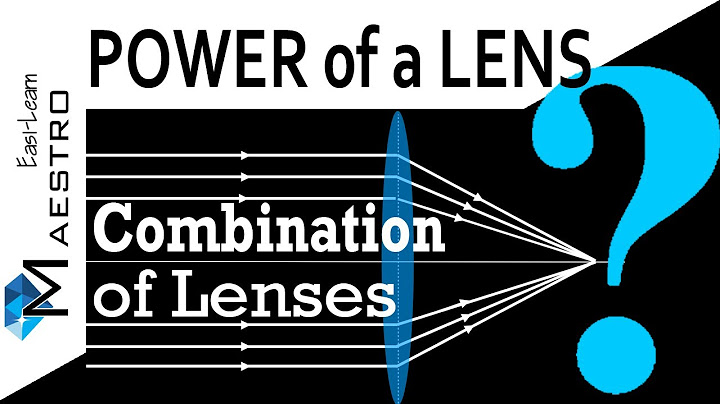Here's a rundown of the various forms of government, with definitions provided by "The World Factbook." Absolute monarchy - a form of government where the monarch rules unhindered, i.e., without any laws, constitution or legally organized opposition. Anarchy - a condition of lawlessness or political disorder brought about by the absence of governmental authority. Authoritarian - a form of government in which state authority is imposed onto many aspects of citizens' lives. Commonwealth - a nation, state or other political entity founded on law and united by a compact of the people for the common good. Communist - a system of government in which the state plans and controls the economy and a single -- often authoritarian -- party holds power; state controls are imposed with the elimination of private ownership of property or capital while claiming to make progress toward a higher social order in which all goods are equally shared by the people (i.e., a classless society). Confederacy (Confederation) - a union by compact or treaty between states, provinces or territories that creates a central government with limited powers; the constituent entities retain supreme authority over all matters except those delegated to the central government. Constitutional - a government by or operating under an authoritative document (constitution) that sets forth the system of fundamental laws and principles that determines the nature, functions and limits of that government. Constitutional democracy - a form of government in which the sovereign power of the people is spelled out in a governing constitution. Constitutional monarchy - a system of government in which a monarch is guided by a constitution whereby his/her rights, duties, and responsibilities are spelled out in written law or by custom. Democracy - a form of government in which the supreme power is retained by the people, but which is usually exercised indirectly through a system of representation and delegated authority periodically renewed. Democratic republic - a state in which the supreme power rests in the body of citizens entitled to vote for officers and representatives responsible to them. Dictatorship - a form of government in which a ruler or small clique wield absolute power (not restricted by a constitution or laws). Ecclesiastical - a government administrated by a church. Emirate - similar to a monarchy or sultanate, a government in which the supreme power is in the hands of an emir (the ruler of a Muslim state); the emir may be an absolute overlord or a sovereign with constitutionally limited authority. Federal (Federation) - a form of government in which sovereign power is formally divided -- usually by means of a constitution -- between a central authority and a number of constituent regions (states, colonies or provinces) so that each region retains some management of its internal affairs; differs from a confederacy in that the central government exerts influence directly upon both individuals as well as upon the regional units. Federal republic - a state in which the powers of the central government are restricted and in which the component parts (states, colonies, or provinces) retain a degree of self-government; ultimate sovereign power rests with the voters who chose their governmental representatives. Islamic republic - a particular form of government adopted by some Muslim states; although such a state is, in theory, a theocracy, it remains a republic, but its laws are required to be compatible with the laws of Islam. Maoism - the theory and practice of Marxism-Leninism developed in China by Mao Zedong (Mao Tse-tung), which states that a continuous revolution is necessary if the leaders of a communist state are to keep in touch with the people. Marxism - the political, economic and social principles espoused by 19th century economist Karl Marx; he viewed the struggle of workers as a progression of historical forces that would proceed from a class struggle of the proletariat (workers) exploited by capitalists (business owners), to a socialist "dictatorship of the proletariat," to, finally, a classless society -- Communism. Marxism-Leninism - an expanded form of communism developed by Vladimir Lenin from doctrines of Karl Marx; Lenin saw imperialism as the final stage of capitalism and shifted the focus of workers' struggle from developed to underdeveloped countries. Monarchy - a government in which the supreme power is lodged in the hands of a monarch who reigns over a state or territory, usually for life and by hereditary right; the monarch may be either a sole absolute ruler or a sovereign - such as a king, queen or prince - with constitutionally limited authority. Oligarchy - a government in which control is exercised by a small group of individuals whose authority generally is based on wealth or power. Parliamentary democracy - a political system in which the legislature (parliament) selects the government - a prime minister, premier or chancellor along with the cabinet ministers - according to party strength as expressed in elections; by this system, the government acquires a dual responsibility: to the people as well as to the parliament. Parliamentary government (Cabinet-Parliamentary government) - a government in which members of an executive branch (the cabinet and its leader - a prime minister, premier or chancellor) are nominated to their positions by a legislature or parliament, and are directly responsible to it; this type of government can be dissolved at will by the parliament (legislature) by means of a no-confidence vote or the leader of the cabinet may dissolve the parliament if it can no longer function. Parliamentary monarchy - a state headed by a monarch who is not actively involved in policy formation or implementation (i.e., the exercise of sovereign powers by a monarch in a ceremonial capacity); true governmental leadership is carried out by a cabinet and its head - a prime minister, premier or chancellor - who are drawn from a legislature (parliament). Presidential - a system of government where the executive branch exists separately from a legislature (to which it is generally not accountable). Republic - a representative democracy in which the people's elected deputies (representatives), not the people themselves, vote on legislation. Socialism - a government in which the means of planning, producing and distributing goods is controlled by a central government that theoretically seeks a more just and equitable distribution of property and labor; in actuality, most socialist governments have ended up being no more than dictatorships over workers by a ruling elite. Sultanate - similar to a monarchy, a government in which the supreme power is in the hands of a sultan (the head of a Muslim state); the sultan may be an absolute ruler or a sovereign with constitutionally limited authority. Theocracy - a form of government in which a Deity is recognized as the supreme civil ruler, the Deity's laws are interpreted by ecclesiastical authorities (bishops, mullahs, etc.); a government subject to religious authority. Totalitarian - a government that seeks to subordinate the individual to the state by controlling not only all political and economic matters, but also the attitudes, values and beliefs of its population. Got a question? Send us an email and crack it. Follow Remy Melina on Twitter @RemyMelina
An autocracy is a system of government in which one person—an autocrat—holds all political, economic, social, and military power. The autocrat’s rule is unlimited and absolute and is not subject to any legal or legislative limitation. While a dictatorship is by definition an autocracy, a dictatorship may also be ruled by an elite group of people, such as a military or religious order. Autocracy can also be compared to oligarchy—rule by a small group of individuals distinguished by their wealth, education or religion—and democracy—rule by a majority of the people. Today, most autocracies exist in the form of absolute monarchies, such as Saudi Arabia, Qatar, and Morocco, and dictatorships, such as North Korea, Cuba, and Zimbabwe.
Compared to complex representative systems of government, such as the United States’ system of federalism, the structure of an autocracy is relatively simple: there is the autocrat and little else. However, no matter how personally forceful or charismatic they may be, autocrats still require some sort of power structure to retain and apply their rule. Historically, autocrats have depended on nobles, business moguls, militaries, or ruthless priesthoods to maintain their power. Since these are often the same groups that may turn against the autocrats and depose them through a coup d'etat or mass insurrection, they are often forced to satisfy the needs of the elite minority over the needs of the general public. For example, social welfare programs are rare to non-existent, while policies to increase the wealth of supportive business oligarchs or the power of the loyal military are common. In an autocracy, all power is concentrated in a single center, be it an individual dictator or a group such as a dominant political party or central committee. In either case, the autocratic power center uses force to suppress opposition and prevent social movements that could lead to the development of opposition. The power centers operate free of any controls or real sanctions. This is in sharp contrast to democracies and other nonautocratic systems of government, in which power is shared by several centers, such as executive, legislative, and judicial branches. In further contrast to autocracies, power centers in nonautocratic systems are subject to controls and legal sanctions and do allow for public opinion and peaceful dissent. Modern autocracies sometimes try to present themselves as less-dictatorial regimes by claiming to embrace values similar to those found in the constitutions and charters of democracies or limited monarchies. They may create parliaments, citizen assemblies, political parties, and courts that are mere facades for the autocracy’s unilateral exercise of power. In practice, all but the most trivial actions of the supposedly representative citizen bodies require the approval of the ruling autocrat. The Communist Party of China’s single-party rule of the People’s Republic of China is a prominent modern example. Autocracy is far from a recently evolved concept. From the emperors of Ancient Rome to the fascist regimes of the 20th century, a few historical examples of autocracies include: Perhaps the earliest known example of autocracy is the Roman Empire, founded in 27 B.C. by Emperor Augustus following the end of the Roman Republic. While Augustus proudly retained the Roman Senate—often praised as the birthplace of representative democracy—he used the gesture to hide the fact that he was slowly transferring all meaningful power to himself. Tsar Ivan IV (1530 - 1584), Ivan The Terrible of Russia, circa 1560. Hulton Archive/Getty ImagesImmediately after being crowned ruler in 1547, first Russian Tsar Ivan IV began earning his fearsome reputation as Ivan the Terrible. Through the execution and exile of those who opposed him, Ivan IV established autocratic control over his expanding Russian Empire. To enforce his power center, Ivan established Russia’s first regular standing army featuring two elite cavalry divisions, the Cossacks and the Oprichnina, dedicated almost exclusively to protecting the Tsar. In 1570, Ivan ordered the Oprichnina to carry out the Massacre of Novgorod, out of his fears that the city had become a breeding ground for treason and treachery against his rule. German Fuhrer and Nazi leader Adolf Hitler addresses soldiers at a Nazi rally in Dortmund, Germany. Hulton Archive/Getty ImagesNazi Germany is an example of an autocracy ruled by a single leader and a supporting political party. After a failed coup d'etat attempt in 1923, the National Socialist German Workers Party under Adolf Hitler began applying less-visible methods of taking over the German government. Taking advantage of civil unrest during the 1930s, Hitler’s Nazi party used its charismatic leader’s stirring speeches and clever propaganda to seize power. After being named German chancellor in March 1933, Hitler's party began restricting civil liberties, with the military and Herman Goering’s Gestapo secret police suppressing opposition to Nazi Party rule. Having turned the formerly democratic German Reich government into a dictatorship, Hitler alone acted on behalf of Germany. Spanish authoritarian leader Francisco Franco (left) with Italian dictator Benito Mussolini, March 4, 1944. Hulton Archive/Getty ImagesOn October 1, 1936, just three months after the start of the Spanish Civil War, the dominant Nationalist Party rebel leader “El Generalísimo” Francisco Franco was proclaimed Spain’s head of state. Under his rule, Franco quickly turned Spain into a dictatorship widely described as a “semi-fascist regime” displaying the influence of fascism in areas such as labor, the economy, social policy, and single-party control. Known as the “White Terror,” Franco’s reign was maintained through brutal political repression including executions and abuses carried out by his Nationalist Party faction. Although Spain under Franco did not directly join fascist Axis powers Germany and Italy in World War II, it supported them throughout the war while continuing to claim its neutrality. Italian dictator Benito Mussolini (1883 - 1945) surveys the new Caselle Airport during a visit to Turin, 16th May 1939. Hulton Archive/Getty ImagesWith Benito Mussolini acting as Prime Minister of Italy from 1922 to 1943, the National Fascist Party imposed a totalitarian autocratic rule that wiped out political and intellectual opposition, while promising to modernize the economy and restore traditional Italian religious and moral values. After reorganizing the former Italian parliamentary system into what he called a “legally organized executive dictatorship,” Mussolini defied League of Nations sanctions by increasing Italy’s military involvement in foreign conflicts. After invading Albania in 1939, Italy signed the Pact of Steel establishing its alliance with Nazi Germany and heralding its ill-fated participation on the side of the Axis powers in World War II. While both autocracy and authoritarianism are characterized by having single dominant rulers who may use force and the repression of individual rights to maintain power, an autocracy may demand less control over the people’s lives and be less likely to abuse its power. As a result, truly authoritarian regimes tend to be more unpopular and thus more subject to revolt or overthrow than autocracies. Truly authoritarian dictatorships are rare today. More common instead are centralized power regimes best described as “liberal autocracies,” such as Russia, China, and North Korea. Though ruled by single dominant political parties controlled by single dominant leaders, they allow for limited public expression and involvement through institutions like elected congresses, ministries, and assemblies. While most actions of these bodies are subject to party approval, they present at least a guise of democracy. For example, China’s 3,000-delegate elected National People's Congress (NPC), though designated by China’s 1982 constitution to be the state’s most powerful governing body, is in practice little more than a rubber stamp for the decisions of the ruling Chinese Communist Party.
|

Pos Terkait
Periklanan
BERITA TERKINI
Toplist Popular
#2
Top 5 wilo fluidcontrol schaltet nicht ab 2022
1 years ago#3
#4
Top 8 warum kein blutspenden nach piercing 2022
1 years ago#5
#6
Top 8 o que é pirangagem 2022
1 years ago#7
#8
Top 8 o que é gluten free 2022
1 years ago#9
#10
Top 8 mondeo mk3 türgriff öffnet nicht 2022
1 years agoPeriklanan
Terpopuler
Periklanan
Tentang Kami
Dukungan

Copyright © 2024 ketiadaan Inc.


















